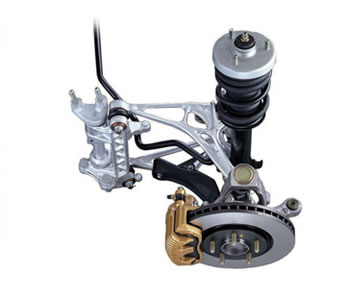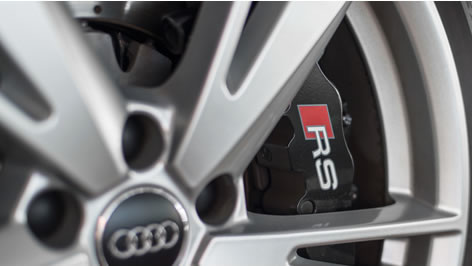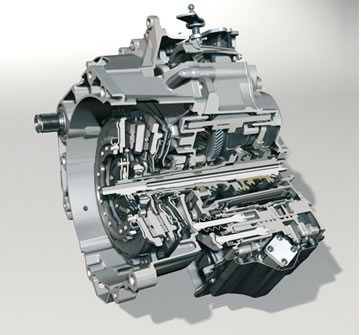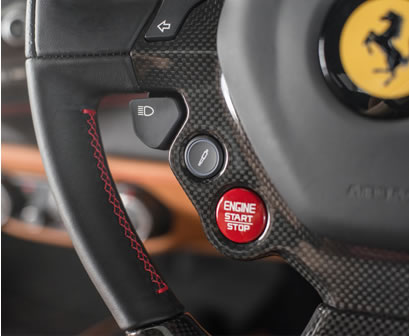Eight race car technologies brought over to the road
28 Jun 2018|14,328 views


EIGHT RACE CAR TECHNOLOGIES BROUGHT OVER TO THE ROAD
Text | Anthony Lim
Photos | Low Fai Ming & Manufactures
Photos | Low Fai Ming & Manufactures
28th June 2018
Your vehicle is actually a race car in disguise. Don't think so? Here are eight race car technologies that were brought over to road cars.
Did you know that you're driving a piece of Formula One history? Well, not exactly. But your road car does take after a race car in many ways. Just like how clothes and toys are passed down from elder to younger sibling, so have race car technologies been brought over to their road-going siblings. Here's a look at eight race car technologies that were born on the track and bred for the street.
Did you know that you're driving a piece of Formula One history? Well, not exactly. But your road car does take after a race car in many ways. Just like how clothes and toys are passed down from elder to younger sibling, so have race car technologies been brought over to their road-going siblings. Here's a look at eight race car technologies that were born on the track and bred for the street.
1. Suspensions
Suspensions have only one job on the race track, and that is to keep the tyres glued to the ground at all times. Multi-link suspensions and MacPherson struts, which are seen on F1 and NASCAR race cars, respectively, are optimised to provide the most amount of grip on the track, with comfort taking a back seat.On the street, however, it's a whole different ball game. Rather than focusing on all-out tarmac-hugging grip, road-going suspension setups have been adapted to strike a balance between performance and comfort so that you don't have to go over a pothole without breaking your back.
2. Disc brakes
First appearing on race cars in the 1950s, disc brakes can now be found on most road cars these days. They allow for better heat dissipation with the help of vents, which minimise brake fade and, in turn, increase stopping power.Most production car disc brakes are made of cast iron while the ones found on race cars are carbon ceramic, which are lighter, more durable and, of course, more expensive to produce. But despite their price tag, carbon ceramic brakes can still be found on road cars like the ones in Porsche's lineup.
3. Lightweight materials
As Lotus likes to say, 'Light is Right'. This statement holds true for improving performance, especially on the track. Strong yet lightweight, carbon fibre and aluminium materials are used extensively on F1 cars to shorten lap times and win trophies.Due to its high manufacturing cost, the use of carbon fibre in production cars is mainly limited to accessories such as rims and spoilers. What's more common on the streets, however, is the use of aluminium, which can be found in car bodies and even in engine blocks. A classic example of this is the first generation Honda NSX, which was the world's first mass-produced car to feature an all-aluminium body.
4. Hybrid systems
What do Porsche's E-Hybrid and Audi's e-tron have in common? They are both iterations of hybrid technologies that their respective carmakers use in the World Endurance Championship (WEC). Though not exactly the same, these hybrid systems have been refined over years of participating in, and winning, WEC and adapted for use in their production cars.Hybrid systems are a dime a dozen these days and provide performance, fuel efficiency and, in some cases, rebates.
5. Safety components
Just as with the aforementioned lightweight materials, safety components have made their way from the track to the street, in the form of roll cages and even rear view mirrors. Roll cages not only protect race car drivers in a collision, they also help stiffen the chassis, which, in turn, provides additional stability and results in shorter lap times.Contrary to popular belief, production cars do have varied versions of roll cages, we just don't see them. A network of steel tubes is incorporated into the car's design and is hidden from view by door trim, upholstery and other interior materials.
Rear view mirrors were first used in the early 1900s by race drivers who wanted to keep an eye on the competition behind them. But since then, this unassuming piece of glass has grown to be one of the most important safety tools in every driver's arsenal.
6. Dual-clutch transmissions
Manual transmissions are undoubtedly fun. But when the determining factor of a podium finish is a fraction of a second, the use of a clutch becomes far too cumbersome. Manually changing the position of a gear shifter into various positions is not only time-wasting, but also makes it possible for a race driver to mistakenly select the wrong gear at the wrong time.Enter the dual-clutch. Dual-clutch transmissions not only shift faster than manual transmissions, thanks to the use of two clutches, but also forgo the need for a manual gear shifter and clutch pedal. Dual-clutch transmissions are pretty common on the streets these days and are used by many manufacturers. Some carmakers like Audi and Volkswagen refer to them as Direct-Shift Gearboxes but they're essentially the same thing.
7. Push start buttons
It doesn't look like much, but your push start button has helped many racing drivers shave split seconds off their lap times. The act of turning a key to start the engine takes up too much time in races such as the WEC, where drivers have more important tasks to take care of, such as changing gears.Now, push start buttons can be found in almost every new car. You probably won't need to save those precious few seconds, but it sure as hell makes driving a lot more convenient.
8. Tyre compounds
At any point in time, there's only the equivalent of one handprint of tread bridging each of your tyres to the road. And at speeds of up to 322km/h, optimising grip is essential for performance, as well as ensuring a NASCAR-spec car doesn't spin out of control.Race cars make use of racing slicks, which are made of soft rubber compounds that provide the most amount of traction and keep the car on track (pun intended). While they ensure the highest level of performance, racing slicks have short lifespans and are also illegal to use on the road.
This is why tyre manufacturers such as Goodyear, a tyre sponsor for NASCAR, have adapted their racing tyre technologies to meet the demands of road cars by finding the perfect balance between performance and durability.
Many sport tyres such as the Goodyear Eagle F1 Asymmetric 3, which are designed for production cars, can trace their roots back to the track. These tyres provide the best of dry and wet traction, and last a whole lot longer than racing slicks.
The Eagle F1 Assymetric 3 is designed with Goodyear's Grip Booster Technology, which features a new adhesive resin within the tyre's compound for extra stickiness, providing better grip, as well as a shorter braking distance on both wet and dry road conditions.

Your vehicle is actually a race car in disguise. Don't think so? Here are eight race car technologies that were brought over to road cars.
Did you know that you're driving a piece of Formula One history? Well, not exactly. But your road car does take after a race car in many ways. Just like how clothes and toys are passed down from elder to younger sibling, so have race car technologies been brought over to their road-going siblings. Here's a look at eight race car technologies that were born on the track and bred for the street.
Did you know that you're driving a piece of Formula One history? Well, not exactly. But your road car does take after a race car in many ways. Just like how clothes and toys are passed down from elder to younger sibling, so have race car technologies been brought over to their road-going siblings. Here's a look at eight race car technologies that were born on the track and bred for the street.


1. Suspensions
Suspensions have only one job on the race track, and that is to keep the tyres glued to the ground at all times. Multi-link suspensions and MacPherson struts, which are seen on F1 and NASCAR race cars, respectively, are optimised to provide the most amount of grip on the track, with comfort taking a back seat.
On the street, however, it's a whole different ball game. Rather than focusing on all-out tarmac-hugging grip, road-going suspension setups have been adapted to strike a balance between performance and comfort so that you don't have to go over a pothole without breaking your back.

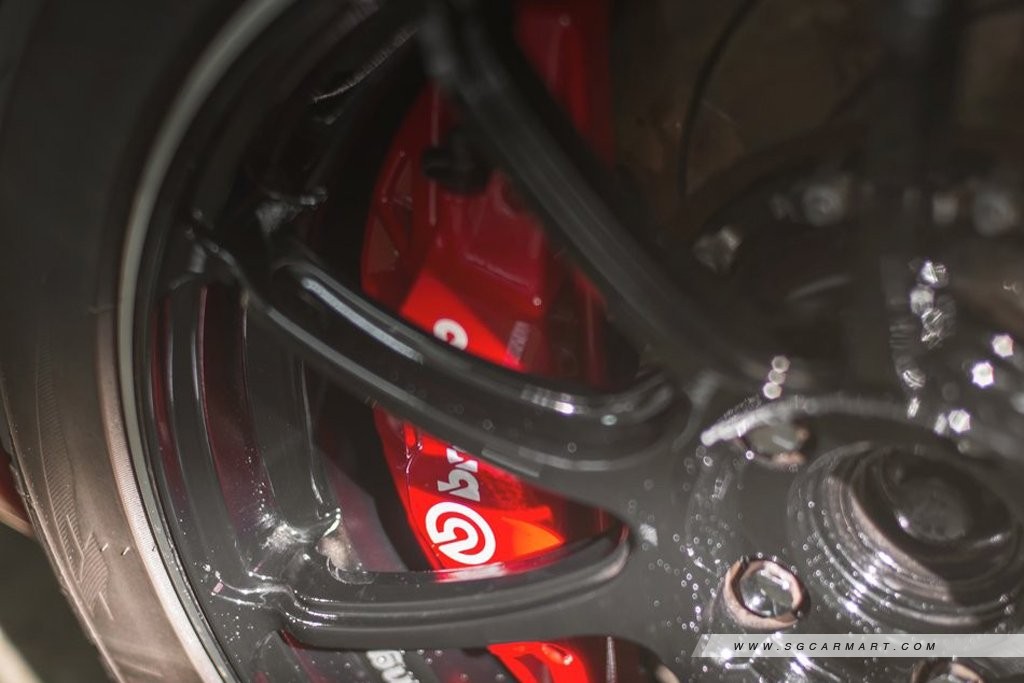
2. Disc brakes
First appearing on race cars in the 1950s, disc brakes can now be found on most road cars these days. They allow for better heat dissipation with the help of vents, which minimise brake fade and, in turn, increase stopping power.
Most production car disc brakes are made of cast iron while the ones found on race cars are carbon ceramic, which are lighter, more durable and, of course, more expensive to produce. But despite their price tag, carbon ceramic brakes can still be found on road cars like the ones in Porsche's lineup.

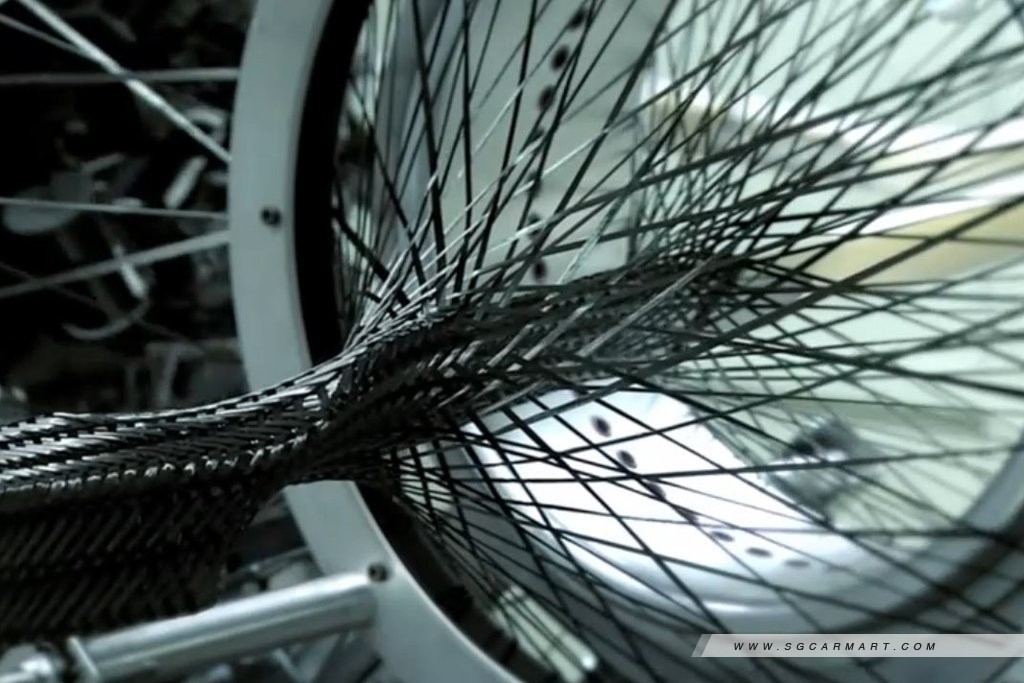
3. Lightweight materials
As Lotus likes to say, 'Light is Right'. This statement holds true for improving performance, especially on the track. Strong yet lightweight, carbon fibre and aluminium materials are used extensively on F1 cars to shorten lap times and win trophies.
Due to its high manufacturing cost, the use of carbon fibre in production cars is mainly limited to accessories such as rims and spoilers. What's more common on the streets, however, is the use of aluminium, which can be found in car bodies and even in engine blocks. A classic example of this is the first generation Honda NSX, which was the world's first mass-produced car to feature an all-aluminium body.


4. Hybrid systems
What do Porsche's E-Hybrid and Audi's e-tron have in common? They are both iterations of hybrid technologies that their respective carmakers use in the World Endurance Championship (WEC). Though not exactly the same, these hybrid systems have been refined over years of participating in, and winning, WEC and adapted for use in their production cars.
Hybrid systems are a dime a dozen these days and provide performance, fuel efficiency and, in some cases, rebates.

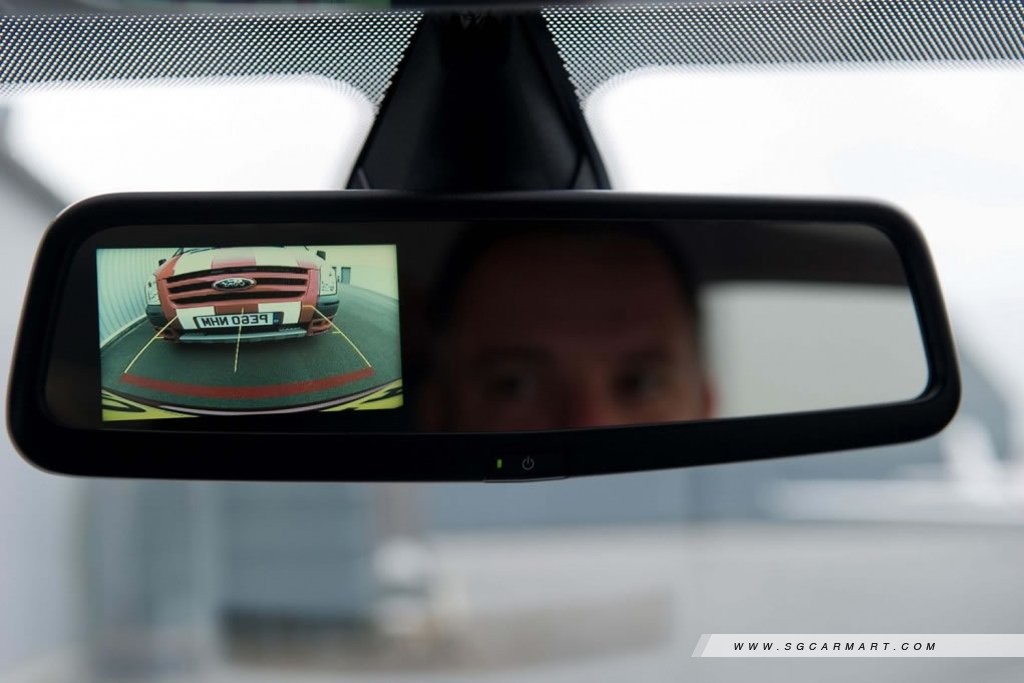
5. Safety components
Just as with the aforementioned lightweight materials, safety components have made their way from the track to the street, in the form of roll cages and even rear view mirrors. Roll cages not only protect race car drivers in a collision, they also help stiffen the chassis, which, in turn, provides additional stability and results in shorter lap times.
Contrary to popular belief, production cars do have varied versions of roll cages, we just don't see them. A network of steel tubes is incorporated into the car's design and is hidden from view by door trim, upholstery and other interior materials.
Rear view mirrors were first used in the early 1900s by race drivers who wanted to keep an eye on the competition behind them. But since then, this unassuming piece of glass has grown to be one of the most important safety tools in every driver's arsenal.


6. Dual-clutch transmissions
Manual transmissions are undoubtedly fun. But when the determining factor of a podium finish is a fraction of a second, the use of a clutch becomes far too cumbersome. Manually changing the position of a gear shifter into various positions is not only time-wasting, but also makes it possible for a race driver to mistakenly select the wrong gear at the wrong time.
Enter the dual-clutch. Dual-clutch transmissions not only shift faster than manual transmissions, thanks to the use of two clutches, but also forgo the need for a manual gear shifter and clutch pedal. Dual-clutch transmissions are pretty common on the streets these days and are used by many manufacturers. Some carmakers like Audi and Volkswagen refer to them as Direct-Shift Gearboxes but they're essentially the same thing.


7. Push start buttons
It doesn't look like much, but your push start button has helped many racing drivers shave split seconds off their lap times. The act of turning a key to start the engine takes up too much time in races such as the WEC, where drivers have more important tasks to take care of, such as changing gears.
Now, push start buttons can be found in almost every new car. You probably won't need to save those precious few seconds, but it sure as hell makes driving a lot more convenient.

8. Tyre compounds
At any point in time, there's only the equivalent of one handprint of tread bridging each of your tyres to the road. And at speeds of up to 322km/h, optimising grip is essential for performance, as well as ensuring a NASCAR-spec car doesn't spin out of control.
Race cars make use of racing slicks, which are made of soft rubber compounds that provide the most amount of traction and keep the car on track (pun intended). While they ensure the highest level of performance, racing slicks have short lifespans and are also illegal to use on the road.

This is why tyre manufacturers such as Goodyear, a tyre sponsor for NASCAR, have adapted their racing tyre technologies to meet the demands of road cars by finding the perfect balance between performance and durability.
Many sport tyres such as the Goodyear Eagle F1 Asymmetric 3, which are designed for production cars, can trace their roots back to the track. These tyres provide the best of dry and wet traction, and last a whole lot longer than racing slicks.
The Eagle F1 Assymetric 3 is designed with Goodyear's Grip Booster Technology, which features a new adhesive resin within the tyre's compound for extra stickiness, providing better grip, as well as a shorter braking distance on both wet and dry road conditions.
Many sport tyres such as the Goodyear Eagle F1 Asymmetric 3, which are designed for production cars, can trace their roots back to the track. These tyres provide the best of dry and wet traction, and last a whole lot longer than racing slicks.
The Eagle F1 Assymetric 3 is designed with Goodyear's Grip Booster Technology, which features a new adhesive resin within the tyre's compound for extra stickiness, providing better grip, as well as a shorter braking distance on both wet and dry road conditions.





















